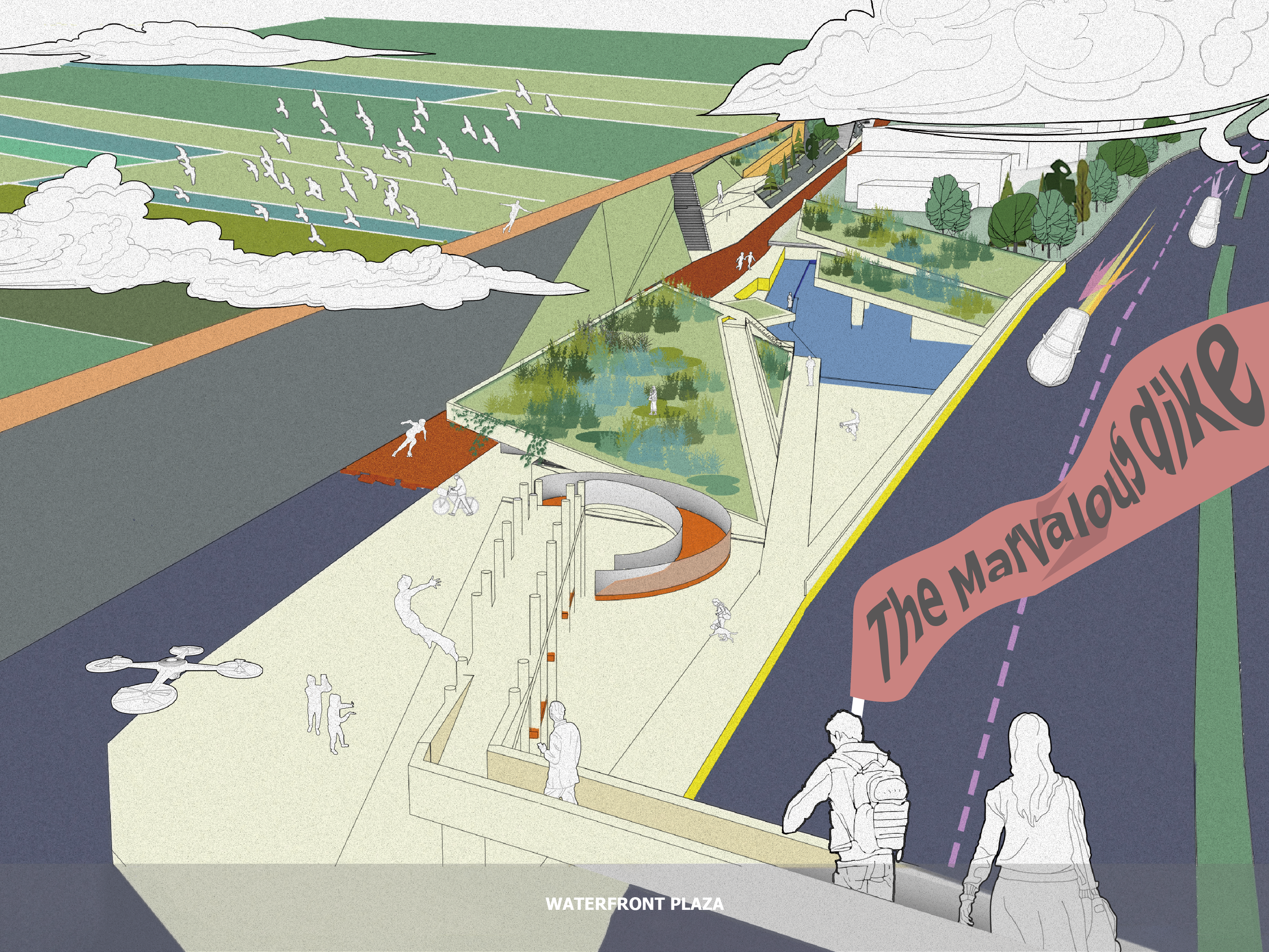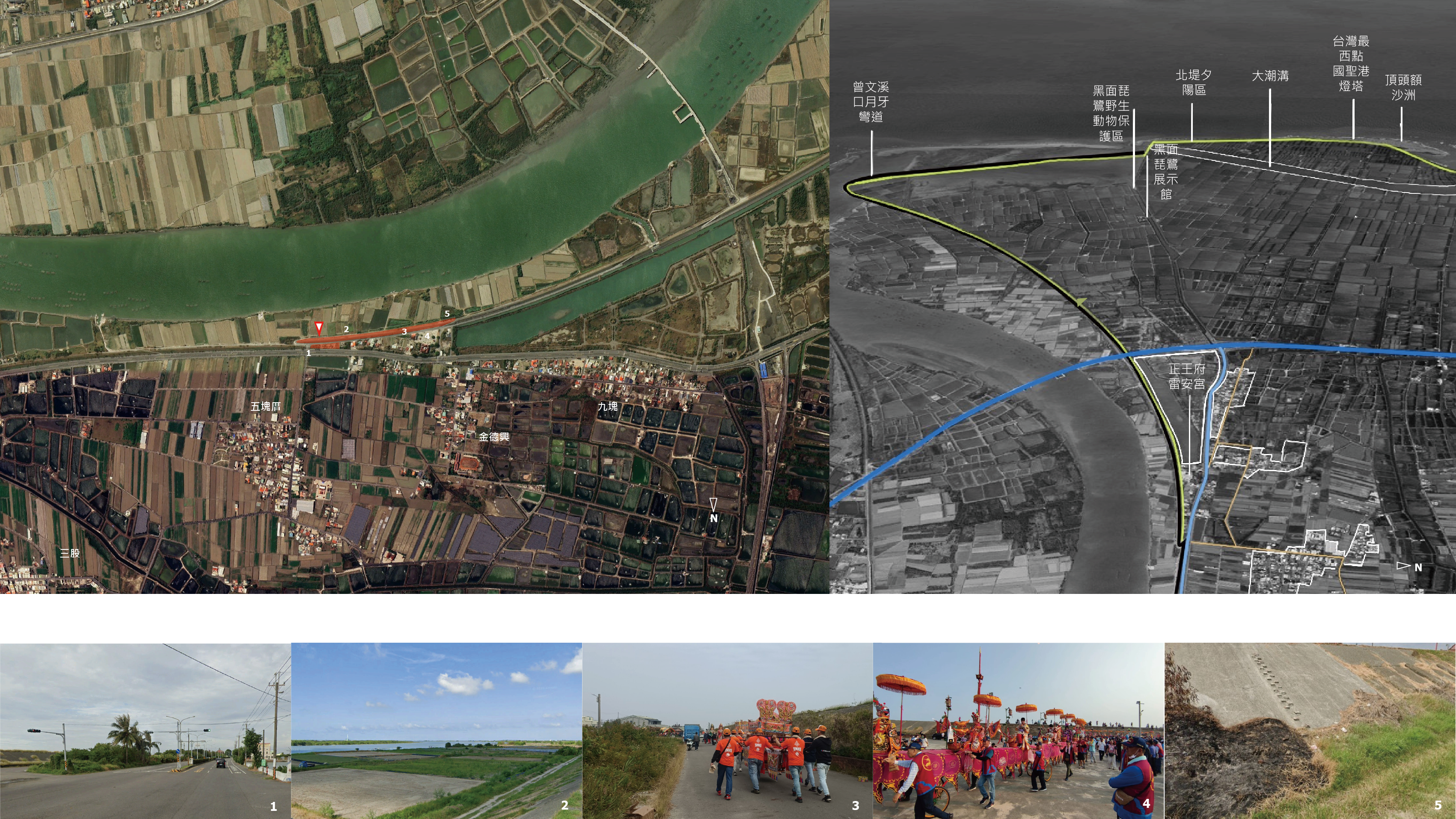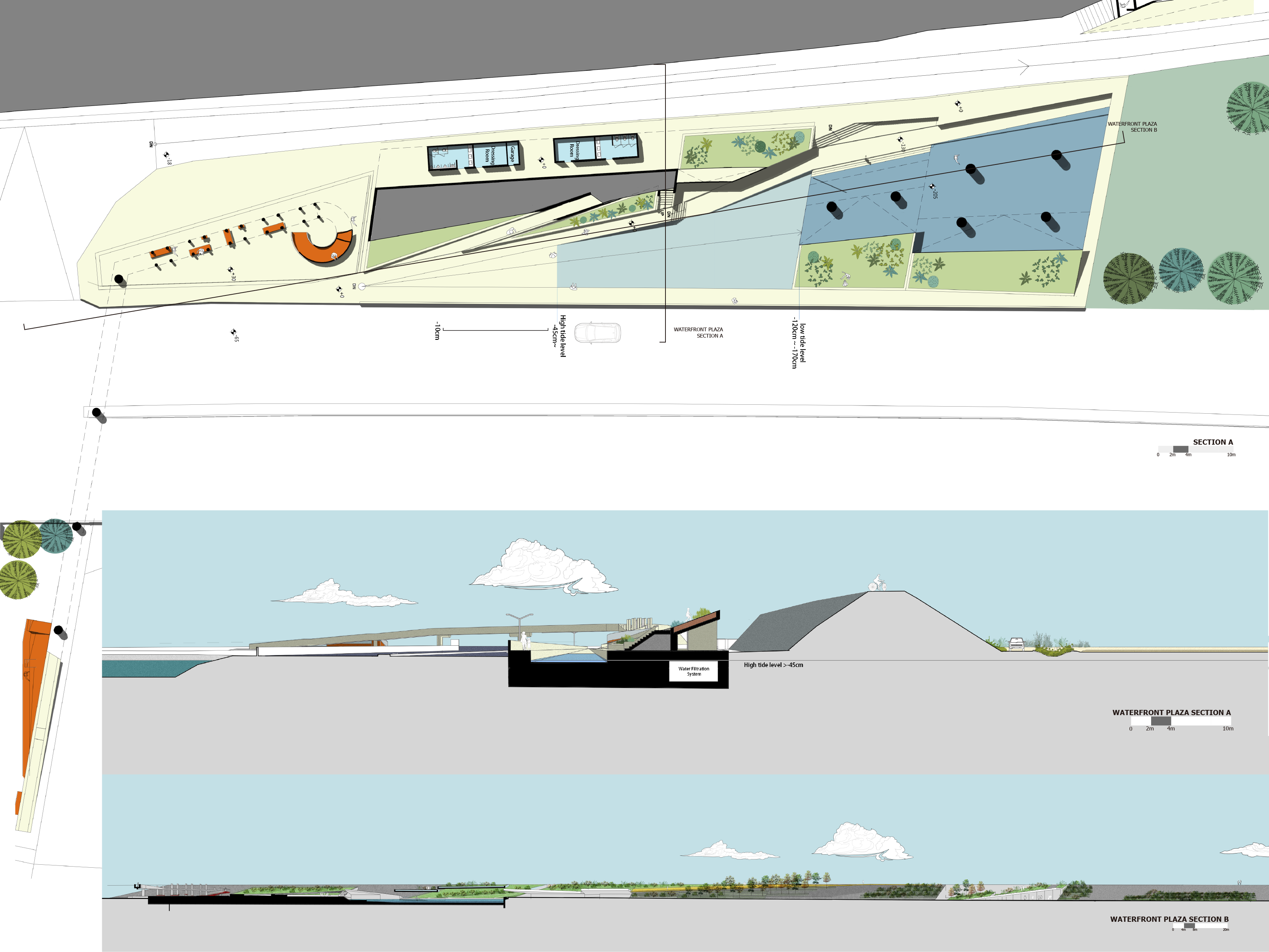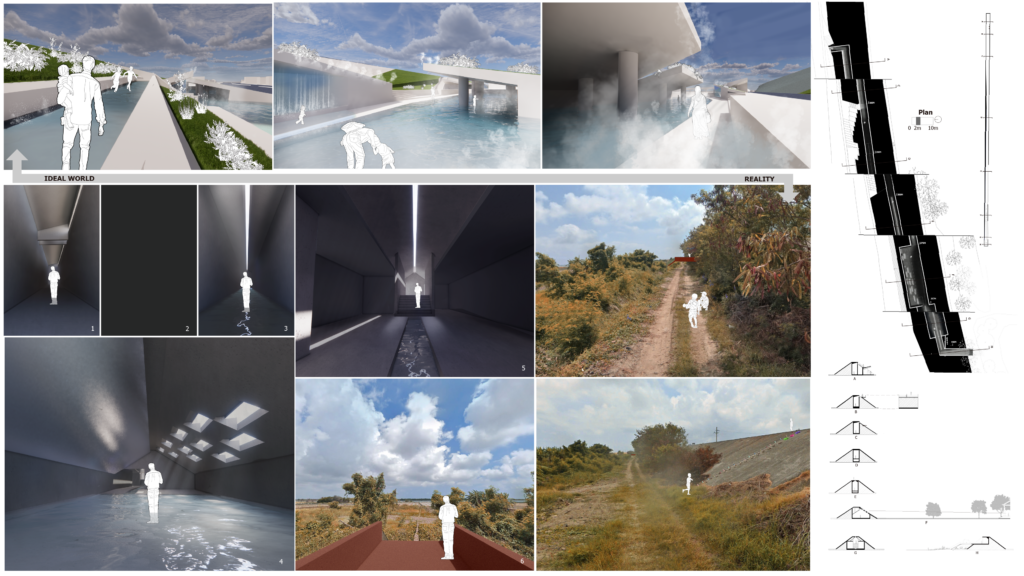敬與否
Awe or Not
陳佳衛


水的媒介的當代詮釋
設計說明
隨著河道穩定,人們能否重新通過堤防找回對水的敬畏與聯繫?
基地
臺南七股區海埔堤防
水,萬物初生之源,曾是人們生活的中心。然而,洪水災害使得沿河居民被迫遷移,轉而以敬畏和尊重的態度對待自然。建廟祭祀如「雷府三兄弟」信仰,見證了人們從對抗自然到定居安穩的歷程。隨著科技進步,堤防和水庫穩定了河道,改變了人們的生活方式,使得人與水的關係漸行漸遠。
新舊兩端堤防不僅記錄著人類抗洪的努力,更象徵著對自然的敬畏與疏遠。我以探討新舊堤防如何反映人類態度的轉變,並試圖通過堤防與信仰這兩種不同形式的敬畏,重新連接人與河,喚醒現代人對水的新認知,讓堤防成為人們重新接近自然的起點。
Site
Tainan, Qigu District, Haipu Dike
Water, vital for life, saw a shift in perception after flood disasters forced riverside residents to relocate, fostering a newfound reverence for nature. Temple worship, exemplified by the belief in the “Leifu Brothers,” signifies humanity’s transition from adversity to stability. Technological advancements like levees and reservoirs stabilized river channels but also distanced people from their natural connection with water. Contrasting old and new levees highlights humanity’s struggle against floods and its evolving relationship with nature. By exploring how these levees reflect changes in human attitudes, I seek to utilize them alongside religious faith to reconnect humanity with rivers, fostering a deeper appreciation of water and rekindling our bond with nature.





